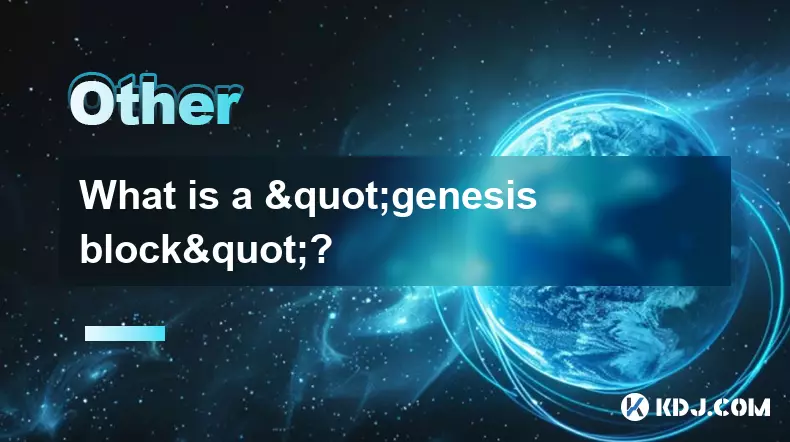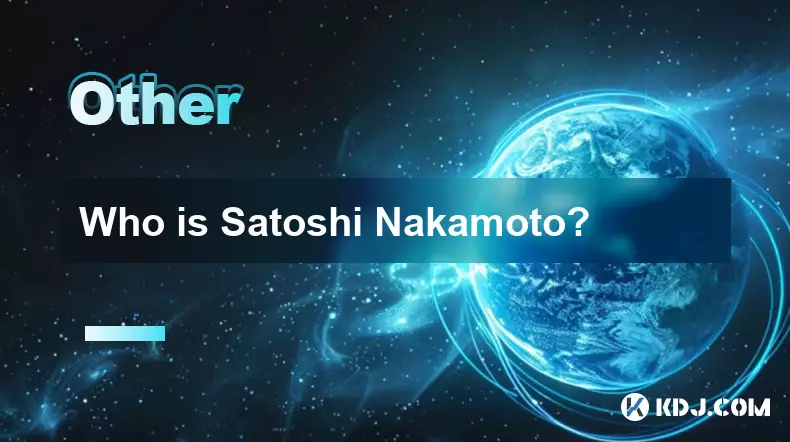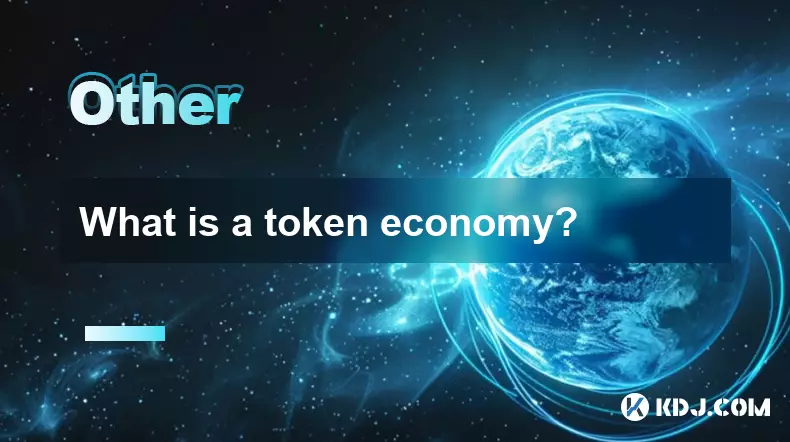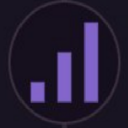-
 bitcoin
bitcoin $99177.955738 USD
-7.32% -
 ethereum
ethereum $3187.183061 USD
-12.38% -
 tether
tether $0.999809 USD
0.00% -
 xrp
xrp $2.117933 USD
-9.42% -
 bnb
bnb $906.710033 USD
-9.17% -
 solana
solana $149.367737 USD
-10.74% -
 usd-coin
usd-coin $0.999816 USD
0.01% -
 tron
tron $0.281498 USD
-0.38% -
 dogecoin
dogecoin $0.156292 USD
-8.00% -
 cardano
cardano $0.500744 USD
-10.19% -
 hyperliquid
hyperliquid $38.087358 USD
-4.58% -
 chainlink
chainlink $14.097831 USD
-8.54% -
 bitcoin-cash
bitcoin-cash $463.329916 USD
-9.22% -
 ethena-usde
ethena-usde $0.999078 USD
-0.01% -
 unus-sed-leo
unus-sed-leo $9.475862 USD
-0.79%
How are blocks linked together?
Each block in a blockchain contains a cryptographic hash of the previous block, creating a secure, unbreakable chain that ensures data integrity and immutability.
Aug 04, 2025 at 06:56 am

Understanding the Structure of a Blockchain
A blockchain is a decentralized digital ledger composed of a sequence of blocks, each containing a list of transactions. The way these blocks are connected ensures data integrity and immutability. Each block contains essential components: a block header, a list of transactions, and a reference to the previous block. The block header includes metadata such as the timestamp, nonce, Merkle root, and the previous block hash. The previous block hash is the cryptographic fingerprint of the prior block, which forms the backbone of the chain's linkage. This hash is generated using a cryptographic hash function, typically SHA-256 in Bitcoin’s case, which ensures that even a minor change in the data results in a completely different hash.
The Role of Cryptographic Hashing in Block Linking
Cryptographic hashing is the foundation of how blocks are securely linked. Every block undergoes a hashing process that produces a fixed-length string unique to its content. When a new block is created, it includes the hash of the immediately preceding block within its own header. This creates a parent-child relationship where each block points backward. If someone attempts to alter a transaction in an earlier block, the hash of that block would change, invalidating all subsequent blocks that rely on the original hash. This forces any attacker to re-mine all following blocks, which is computationally infeasible in a well-established blockchain. The immutability of the chain stems directly from this chaining mechanism powered by cryptographic hashing.
How the Genesis Block Initiates the Chain
The very first block in any blockchain is known as the genesis block. Unlike other blocks, it does not reference a previous block because there is no prior data. Its previous block hash field is typically set to zero or a predefined constant. The genesis block is hardcoded into the software of applications that use the blockchain. For example, in Bitcoin, the genesis block was created by Satoshi Nakamoto on January 3, 2009, and contains the message: 'The Times 03/Jan/2009 Chancellor on brink of second bailout for banks.' This block serves as the anchor point from which all other blocks extend. Every subsequent block traces its lineage back to this immutable starting point, reinforcing the continuity and authenticity of the entire chain.
Step-by-Step Process of Adding a New Block
- A new transaction is broadcast to the network and collected by nodes into a mempool (memory pool) of unconfirmed transactions.
- Miners select transactions from the mempool and compile them into a candidate block.
- The miner computes the Merkle root by hashing pairs of transactions until a single hash remains, which is included in the block header.
- The miner retrieves the hash of the most recent block in the blockchain and inserts it into the new block’s header.
- The miner then begins the proof-of-work process, adjusting the nonce until the block’s hash meets the network’s difficulty target.
- Once a valid hash is found, the miner broadcasts the new block to the network.
- Other nodes verify the block’s validity, including checking the correctness of the previous block hash.
- Upon validation, nodes append the new block to their copy of the blockchain, extending the chain.
This process ensures that each new block is cryptographically tied to the one before it, forming an unbroken sequence.
Verifying Block Linkage and Chain Integrity
Nodes in the network continuously validate the integrity of the blockchain by verifying the linkage between blocks. When a node receives a new block, it performs several checks. It confirms that the previous block hash in the new block matches the actual hash of the last block in its local chain. It also re-computes the hash of the new block to ensure it meets the difficulty requirements. Additionally, the node validates all transactions within the block and checks the Merkle root. If any of these checks fail, the block is rejected. This distributed verification process prevents tampering and ensures consensus across the network. The longest valid chain, with the most accumulated proof-of-work, is accepted as the true version of the ledger.
Handling Chain Splits and Orphaned Blocks
Occasionally, two miners may solve the proof-of-work puzzle at nearly the same time, resulting in two valid blocks being broadcast. This creates a temporary chain split, where different parts of the network accept different blocks as the latest. Each node continues building on the block it received first. The tie is resolved when the next block is mined on one of the branches. The branch with more cumulative work becomes the main chain, and the other is abandoned. Blocks on the shorter chain become orphaned or stale blocks. Transactions in these blocks that were not included in the main chain are returned to the mempool for reprocessing. The reliance on the longest chain rule ensures that the network converges on a single, agreed-upon history.
Frequently Asked Questions
Can a block reference more than one previous block?No, each block in a standard blockchain references exactly one previous block through the previous block hash field. This creates a linear, chronological sequence. While some alternative structures like directed acyclic graphs (DAGs) allow multiple parent references, traditional blockchains like Bitcoin and Ethereum maintain a single backward link per block.
What happens if the previous block hash is incorrect?If a block contains an incorrect previous block hash, nodes will reject it during validation. The block will not be added to the chain because it fails to prove continuity with the existing ledger. This safeguard prevents the insertion of fraudulent or misaligned blocks.
Is the block linkage mechanism the same across all cryptocurrencies?Most cryptocurrencies use a similar hash-based chaining mechanism, but the specifics can vary. For example, Ethereum uses Keccak-256 as its hashing function, while some blockchains implement different consensus mechanisms like proof-of-stake, which may alter how blocks are proposed and validated, though the fundamental idea of referencing prior blocks remains consistent.
How do nodes know which block is the latest?Nodes identify the latest block by following the longest valid chain with the most accumulated proof-of-work (or stake, in PoS systems). They continuously receive updates from peers and update their local copy to match the chain with the highest difficulty total, ensuring synchronization across the network.
Disclaimer:info@kdj.com
The information provided is not trading advice. kdj.com does not assume any responsibility for any investments made based on the information provided in this article. Cryptocurrencies are highly volatile and it is highly recommended that you invest with caution after thorough research!
If you believe that the content used on this website infringes your copyright, please contact us immediately (info@kdj.com) and we will delete it promptly.
- Bitcoin's Wild Ride: Saylor, Kiyosaki, and the Quest for $200K
- 2025-11-05 10:50:13
- Culex, Cardano, and Aster: A Crypto Cocktail of Mosquitoes, Dips, and CZ Fuel
- 2025-11-05 11:00:17
- Crypto Presales, Coin Growth, and Established Coins: Navigating the 2025 Buzz
- 2025-11-05 11:00:17
- La Culex, Crypto Investment, and Pudgy Penguins: A NYC Perspective
- 2025-11-05 10:30:13
- Zcash Defies Crypto Crash: Reversal Risk on the Horizon?
- 2025-11-05 11:00:01
- Score Big with BetMGM: NBA, NFL, and the TOP150 Bonus Code
- 2025-11-05 08:50:13
Related knowledge

What is a block explorer and how do you use it?
Oct 24,2025 at 12:36am
What Is a Block Explorer?1. A block explorer is a web-based tool that allows users to view and analyze data on a blockchain network in real time. It f...

What is the "hash rate" of a blockchain network?
Oct 10,2025 at 03:55pm
Understanding Hash Rate in Blockchain Networks1. The hash rate refers to the total computational power being used to process transactions and mine new...

What is a "genesis block"?
Oct 15,2025 at 07:55pm
Understanding the Genesis Block in CryptocurrencyThe genesis block is the very first block in a blockchain network. It serves as the foundation upon w...

Who is Satoshi Nakamoto?
Oct 15,2025 at 01:01pm
Who is Satoshi Nakamoto?1. Satoshi Nakamoto is the pseudonymous individual or group credited with creating Bitcoin, the first decentralized cryptocurr...

How does blockchain technology actually work?
Oct 11,2025 at 02:36pm
Understanding the Core Mechanism of Blockchain1. At its foundation, blockchain is a decentralized digital ledger that records transactions across mult...

What is a token economy?
Sep 20,2025 at 12:18am
Understanding the Foundations of a Token Economy1. A token economy in the context of cryptocurrency refers to a system where digital tokens are used a...

What is a block explorer and how do you use it?
Oct 24,2025 at 12:36am
What Is a Block Explorer?1. A block explorer is a web-based tool that allows users to view and analyze data on a blockchain network in real time. It f...

What is the "hash rate" of a blockchain network?
Oct 10,2025 at 03:55pm
Understanding Hash Rate in Blockchain Networks1. The hash rate refers to the total computational power being used to process transactions and mine new...

What is a "genesis block"?
Oct 15,2025 at 07:55pm
Understanding the Genesis Block in CryptocurrencyThe genesis block is the very first block in a blockchain network. It serves as the foundation upon w...

Who is Satoshi Nakamoto?
Oct 15,2025 at 01:01pm
Who is Satoshi Nakamoto?1. Satoshi Nakamoto is the pseudonymous individual or group credited with creating Bitcoin, the first decentralized cryptocurr...

How does blockchain technology actually work?
Oct 11,2025 at 02:36pm
Understanding the Core Mechanism of Blockchain1. At its foundation, blockchain is a decentralized digital ledger that records transactions across mult...

What is a token economy?
Sep 20,2025 at 12:18am
Understanding the Foundations of a Token Economy1. A token economy in the context of cryptocurrency refers to a system where digital tokens are used a...
See all articles










































































